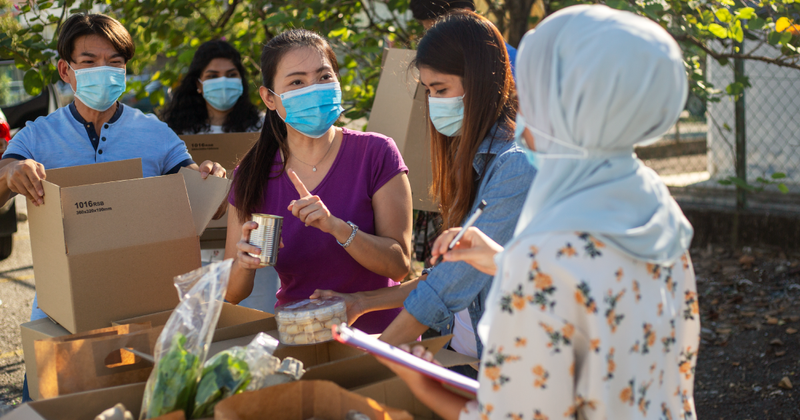
Blog – by CRAFT
A Day in the Life of a Community Organizer: Championing Better Housing and Services for Low-Income Minority Communities
A Day in the Life of a Community Organizer: Championing Better Housing and Services for Low-Income Minority Communities Morning: Energizing the Day 6:30 AM - Rise and Shine The alarm rings early for a community organizer dedicated to improving the lives of low-income minority communities. The day begins with a quick workout, a healthy breakfast, and a moment of mindfulness to prepare for the busy day ahead. Today’s focus: advocating for better housing, clean water, access to education, elderly care services, and reducing drug addiction and gang violence. 8:00 AM - Reviewing the Agenda With a cup of coffee in hand, it’s time to review the agenda for the day. The organizer checks emails, catches up on community news, and finalizes plans for site visits and meetings. There’s a community forum scheduled for the evening, so preparation is key. Mid-Morning: Hitting the Ground Running 9:00 AM - Meeting with Local Leaders The first meeting of the day is with local leaders and city officials to discuss ongoing housing projects. The goal is to ensure that new developments are affordable and meet the needs of the community. Discussions also touch on issues like clean water access and sanitation improvements. 10:30 AM - Site Visit to a Housing Project Next, it’s time for a site visit to a recently completed housing project. The organizer meets with residents to gather feedback and identify any issues that need to be addressed. Listening to the concerns of the community firsthand is crucial for effective advocacy. Late Morning: Community Engagement 11:30 AM - School Visit Education is a cornerstone of community development. A visit to a local school provides an opportunity to discuss resources and programs with educators. The organizer talks about after-school programs, tutoring services, and initiatives to reduce dropout rates. Ensuring that children have access to quality education is a top priority. 12:30 PM - Lunch with Elderly Community Members Lunch is spent with elderly community members at a local senior center. This is a chance to discuss their needs, from healthcare services to social activities. The organizer takes notes on their concerns to bring up in the next city council meeting. Afternoon: Advocacy and Outreach 2:00 PM - Meeting with Healthcare Providers The afternoon begins with a meeting with healthcare providers to discuss strategies for reducing drug addiction and providing better mental health services. Collaboration with medical professionals is essential for tackling these complex issues. 3:30 PM - Community Walkthrough A walk through the neighborhood allows the organizer to speak with residents informally. This grassroots approach helps build trust and encourages community members to share their thoughts and ideas. Observing the community environment also provides insights into issues like gang violence and areas that need more attention. Late Afternoon: Collaboration and Planning 4:30 PM - Workshop on Gang Violence Prevention The organizer hosts a workshop on gang violence prevention, bringing together community members, law enforcement, and social workers. The focus is on creating safe spaces for youth and providing alternatives to gang involvement. Engaging the community in these discussions is vital for developing effective solutions. 5:30 PM - Planning Session for a Clean Water Initiative Next, it’s time to plan a clean water initiative with environmental activists and local engineers. Ensuring that all community members have access to clean drinking water is a fundamental goal. The organizer works on setting timelines, securing funding, and organizing volunteer efforts. Evening: Community Forum and Reflection 6:30 PM - Community Forum The day culminates in a community forum where residents come together to voice their concerns and share their ideas. The organizer facilitates the discussion, ensuring that everyone has a chance to speak. Topics range from housing and education to healthcare and public safety. These forums are essential for maintaining open lines of communication and fostering a sense of community. 8:00 PM - Reflecting and Planning Ahead After the forum, the organizer heads home to reflect on the day’s achievements and challenges. A quick dinner is followed by some time spent reviewing notes and planning for the next day. The work is never done, but the progress made today is a step towards a better future for the community. 10:00 PM - Rest and Recharge Finally, it’s time to rest and recharge. A good night’s sleep is crucial for maintaining the energy and passion needed to continue the fight for better housing and services for low-income minority communities. Conclusion Being a community organizer is demanding, but the impact on the community makes it all worthwhile. Through dedication, collaboration, and unwavering commitment, community organizers are the backbone of progress and positive change in our society. Each day brings new challenges and opportunities, but with every step, the community moves closer to a brighter, more equitable future.






